Further reading
- Independent obituary
- The Guardian obituary
- Review; Byron Society
- New York Times obituary
Leslie A. Marchand | |
|---|---|
| Born | February 13, 1900 |
| Died | July 11, 1999 (aged 99) |
| Occupation | Academic |
| Spouse | Marion Hendrix |
Leslie Alexis Marchand (February 13, 1900 – July 11, 1999) was an American scholar of English literature, who is chiefly notable for his contribution to the study of the Romantic poet Lord Byron, in particular his twelve-volume edition of Byron's Letters and Journals , published between 1973 and 1982, with a supplementary volume in 1994, and Byron: a Biography (Alfred A. Knopf, 1957). He was also a prolific contributor to literary periodicals.
Born in Washington in 1900, Leslie A. Marchand's "parents were French-speaking immigrants to the United States, and Leslie always liked to hear the French echo by stressing the second syllable of his name." [1]
Marchand studied journalism at the University of Washington, graduating with a B.A. in 1922 and an M.A. in 1923. [2] After graduation, he took up a teaching position at Farthest North College in Alaska (Alaska Agricultural College and School of Mines), where he lectured on English and French literature.
In 1929, Marchand began studies towards a PhD at Columbia University. His dissertation, The Athenaeum: a mirror of Victorian culture, a study of the British nineteenth century periodical, The Athenaeum, was published in 1941. [2] [3]
He joined the faculty at Rutgers University in 1937 and taught there until his retirement in the mid-1960s. [2]
Recognizing that manuscripts related to Lord Byron were likely to be scattered across Europe, Marchand set out to gather whatever he could find and to make previously unpublished materials available to the scholarly community. Serendipity played a role in his success in this endeavor:
Perhaps the most dramatic find of all was at a bookshop, where the owner mentioned that he had some things from Ockham Park, home of Byron's grandson, the Earl of Lovelace. These turned out to be routine books, but then the fellow mentioned he had a few notebooks. "They have writing in them," said the bookseller. "I don't know what they are, but if you want them, you can have them." They were by Byron's wife. [4]

John William Polidori was a British writer and physician. He is known for his associations with the Romantic movement and credited by some as the creator of the vampire genre of fantasy fiction. His most successful work was the short story "The Vampyre" (1819), the first published modern vampire story. Although the story was at first erroneously credited to Lord Byron, both Byron and Polidori affirmed that the author was Polidori.

Bruno Paulin Gaston Paris was a French literary historian, philologist, and scholar specialized in Romance studies and medieval French literature. He was nominated for the Nobel Prize in Literature in 1901, 1902, and 1903.
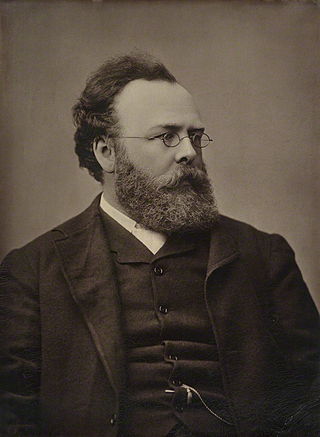
Robert Williams Buchanan was a Scottish poet, novelist and dramatist.

John Murray is a Scottish publisher, known for the authors it has published in its long history including Jane Austen, Sir Arthur Conan Doyle, Lord Byron, Charles Lyell, Johann Wolfgang von Goethe, Herman Melville, Edward Whymper, Thomas Malthus, David Ricardo, and Charles Darwin. Since 2004, it has been owned by conglomerate Lagardère under the Hachette UK brand.
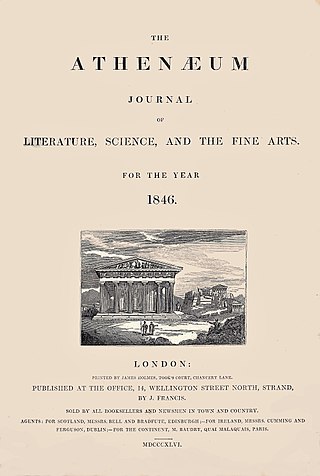
The Athenæum was a British literary magazine published in London, England, from 1828 to 1921.
Nicolo or Nicolas Giraud was a friend of English Romantic poet Lord Byron. The two met in 1809 while Byron was staying in Athens. Giraud, who at that time of their relationship was a fourteen-year-old majordomo and then student at the Capuchin monastery in Athens, reportedly taught Byron Italian, and was his travel companion in Greece. Byron paid for Giraud's education and left him £7,000 in his will. Years after they parted company, Byron changed his will to exclude Giraud. Other than his involvement with Byron, little is known of Giraud's life.
Richard Daniel Altick was an American literary scholar, known for his pioneering contributions to Victorian Studies, as well as for championing both the joys and the rigorous methods of literary research.

Mazeppa is a narrative poem written by the English Romantic poet Lord Byron in 1819. It is based on a popular legend about the early life of Ivan Mazepa (1639–1709), who later became Hetman of Ukraine. Byron's poem was immediately translated into French, where it inspired a series of works in various art forms. The cultural legacy of Mazeppa was revitalised with the independence of Ukraine in 1991.

George Gordon Byron, 6th Baron Byron was an English poet and peer. He was one of the leading figures of the Romantic movement, and is regarded as among the greatest of English poets. Among his best-known works are the lengthy narratives Don Juan and Childe Harold's Pilgrimage; many of his shorter lyrics in Hebrew Melodies also became popular.

"Fragment of Novel" is an unfinished 1819 vampire horror story written by Lord Byron. The story, also known as "A Fragment" and "The Burial: A Fragment", was one of the first in English to feature a vampire theme. The main character was Augustus Darvell. John William Polidori based his novella The Vampyre (1819), originally attributed in print to Lord Byron, on the Byron fragment. The vampire in the Polidori story, Lord Ruthven, was modelled on Byron himself. The story was the result of the meeting that Byron had in the summer of 1816 with Percy Bysshe Shelley where a "ghost writing" contest was proposed. This contest was also what led to the creation of Frankenstein according to Percy Bysshe Shelley's 1818 Preface to the novel. The story is important in the development and evolution of the vampire story in English literature as one of the first to feature the modern vampire as able to function in society in disguise. The short story first appeared under the title "A Fragment" in the 1819 collection Mazeppa: A Poem, published by John Murray in London.
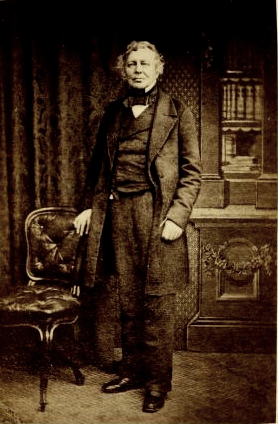
Effingham William Wilson was a 19th-century English radical publisher and bookseller. His main interests were in economics and politics, but he also published poetry.

Henry Thomas Mackenzie Bell, commonly known by his pen name Mackenzie Bell, was an English writer, poet and literary critic. He was a writer for many Victorian era publications, most especially the London Academy, and published several volumes of poetry between 1879 and 1893.
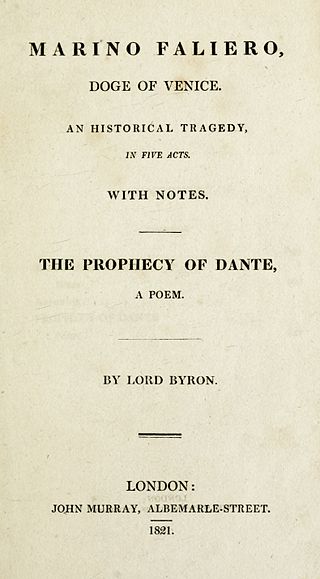
Marino Faliero, Doge of Venice is a blank verse tragedy in five acts by Lord Byron, published and first performed in 1821.
George William Tighe was an Irish agricultural theorist who spent much of his life in Italy. Through his marriage to Margaret King, he exerted an influence on the radical poet Percy Bysshe Shelley.

Sardanapalus (1821) is a historical tragedy in blank verse by Lord Byron, set in ancient Nineveh and recounting the fall of the Assyrian monarchy and its supposed last king. It draws its story mainly from the Historical Library of Diodorus Siculus and from William Mitford's History of Greece. Byron wrote the play during his stay in Ravenna, and dedicated it to Goethe. It has had an extensive influence on European culture, inspiring a painting by Delacroix and musical works by Berlioz, Liszt and Ravel, among others.

William Harness (1790–1869) was an English cleric and man of letters.
Andrew King is Professor of English Literature and Literary Studies at the University of Greenwich and, since 2019, President of the Victorian Popular Fiction Association. He specialises in nineteenth-century periodicals and popular fiction. He is founding co-editor of Victorian Popular Fictions, the organ of the Victorian Popular Fiction Association.
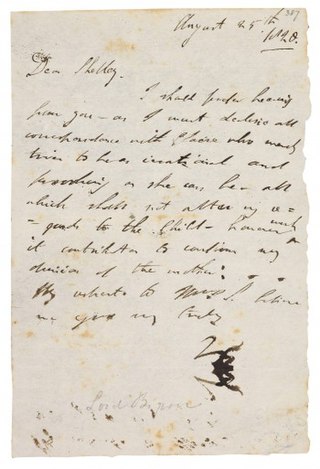
The letters of Lord Byron, of which about 3,000 are known, range in date from 1798, when Byron was 10 years old, to 9 April 1824, a few days before he died. They have long received extraordinary critical praise for their wit, spontaneity and sincerity. Many rate Byron as the greatest letter-writer in English literature, and consider his letters comparable or superior to his poems as literary achievements. They have also been called "one of the three great informal autobiographies in English", alongside the diaries of Samuel Pepys and James Boswell. Their literary value is reflected in the huge prices collectors will pay for them; in 2009 a sequence of 15 letters to his friend Francis Hodgson was sold at auction for almost £280,000.
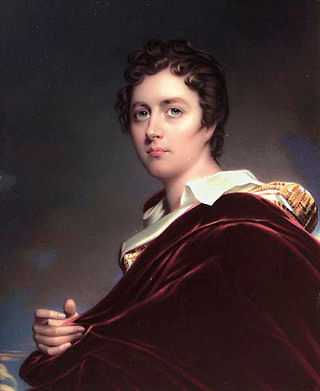
Byron's Memoirs, written between 1818 and 1821 but never published and destroyed soon after his death, recounted at full-length his life, loves and opinions. He gave the manuscript to the poet Thomas Moore, who in turn sold it to John Murray with the intention that it should eventually be published. On Lord Byron's death in 1824, Moore, Murray, John Cam Hobhouse, and other friends who were concerned for his reputation gathered together and burned the original manuscript and the only known copy of it, in what has been called the greatest literary crime in history.
Sir James Runcieman Sutherland, FBA was an English literary scholar, Lord Northcliffe Professor of Modern Literature at London University.